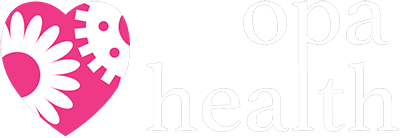Health surveillance is a program involving regular assessments to monitor the health of employees who may be exposed to specific workplace health risks and hazards.
Health Surveillance
We assist businesses nationwide
Get in touch to find out more about our services available in your area.
- CONTACT US
Get Winter Ready.
Book now for your company’s flu vaccines
- CONTACT US
Monitoring the health of your employees
Health and safety law requires health surveillance if your employee is exposed to noise, vibration, fumes, solvents, dusts, biological agents and other substances hazardous to health, even after control measures have been put in place.
Monitoring Employees Health
OPA Health can undertake testing onsite at your work location or in our Colchester clinic. We work alongside your Health and Safety to provide you with the required documentation to show you are responsibly monitoring your employees health.
Some examples of the types of surveillance programmes offered include:
Respiratory sensitisers
In workplaces, respiratory sensitisers are managed under COSHH (Control of Substances Hazardous to Health) regulations. A respiratory sensitiser is a substance that when inhaled, can cause an allergic reaction in the respiratory system. Once a person becomes sensitised to the substance, even low levels of exposure can trigger symptoms such as coughing, wheezing, shortness of breath, or asthma like reactions. Common examples of respiratory sensitisers include:
- Isocyanates (used in paints and foams)
- Wood dusts
- Animal dander and proteins
- Latex
- Mineral oils
Skin irritants and sensitisers
A skin sensitiser is a substance that can cause an allergic reaction in the skin after repeated or prolonged exposure. If signs of irritation is detected early enough, and exposure minimised, the skin can improve, however, if left unattended to, symptoms can become irreversible. Once a person becomes sensitised, even small amounts of the substance can trigger symptoms such as redness, itching, swelling or eczema like reactions.
Examples of skin sensitisers include:
- Wet work
- Formaldehyde (found in some disinfectants and building materials)
- Epoxy resins (used in adhesives and coatings)
- Latex
- Metalworking fluids
Hearing
Hearing health surveillance is required under workplace safety regulations such as the Control of Noise at Work Regulations 2005. In the workplace, hearing health surveillance programmes are implemented if an employee is regularly exposed to high, or combined levels of noise, or if they are particularly sensitive to damage. Work related hearing damage is preventable however once established, is an irreversible condition.
A hearing health surveillance programme is a series of hearing tests to regularly monitor an employee’s hearing to:
- Detect early signs of hearing damage
- Prevent any damage from worsening
- Assess whether control measures are effective and advise employers of further recommendations if needed.
- Ensure PPE is being worn appropriately
- Provide an opportunity to educate employees on the consequences of noise induced hearing loss.
Hand Arm Vibration (HAVS)
Hand-Arm Vibration Syndrome is a condition caused by prolonged exposure to vibration, typically from using power tools or machinery. It affects the blood vessels, nerves, muscles and joints in the fingers, hands and arms. In workplaces, HAVS is monitored under the Control of Vibration at Work Regulations 2005. Early identification and intervention are crucial to prevent permanent damage. Common symptoms of HAVS include:
- Vascular symptoms: Fingers turning white (especially in colder weather)
- Neurological symptoms: Numbness, tingling and reduced grip strength
- Musculoskeletal symptoms: Pain and stiffness in the hands, wrists and arms.
Please call 01206 700911
Or contact us via email form below


